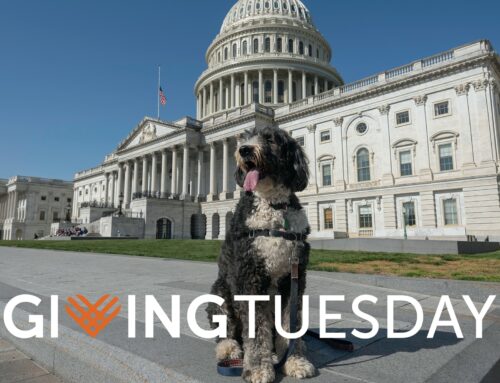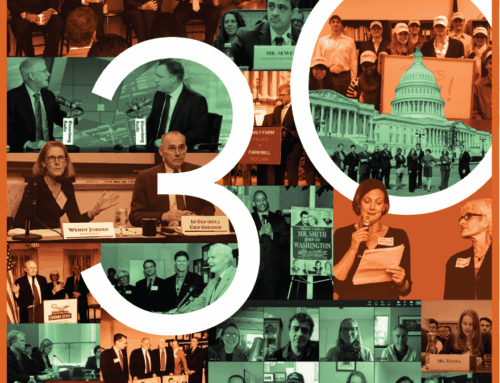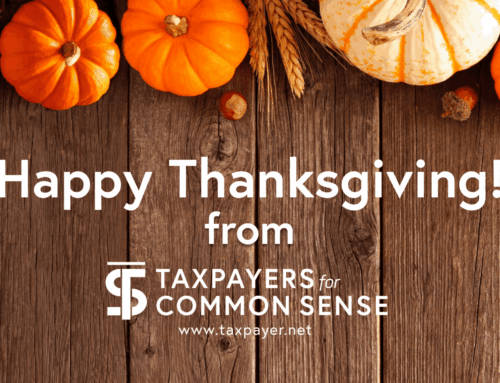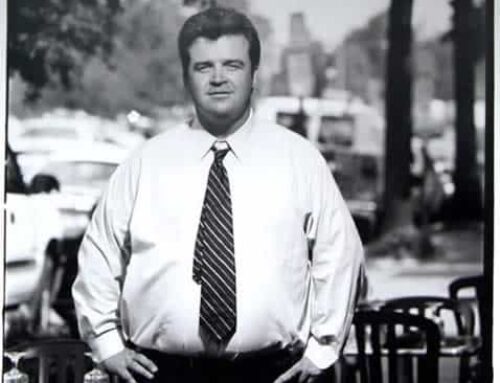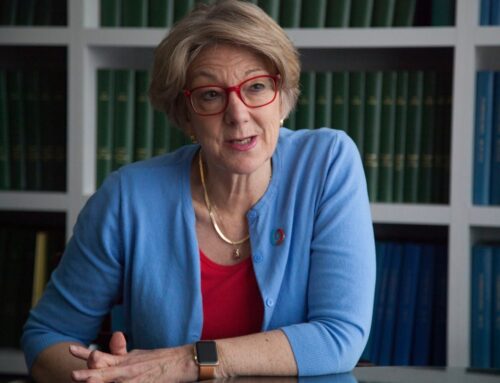On May 27, Taxpayers for Common Sense joined with nine other fiscally conservative organizations to write the National Oceanographic and Atmospheric Administration that the Marine Fishery Advisory Committee proposal to create a federal fishery certification scheme was wasteful and duplicative of the well regarded third-party certification systems that already exist.
|
May 27, 2014
Ms. Eileen Sobeck Dear Assistant Administrator Sobeck: The Marine Fisheries Advisory Committee (MAFAC) recently proposed a new, government-backed certification scheme to label domestically harvested seafood as sustainably fished. This program is a redundant and possibly costly endeavor that the National Oceanic and Atmospheric Administration (NOAA) should not pursue. Adopting a new certification system would mean spending government time and resources trying to construct a solution to a problem that does not exist. There are already third-party sustainability certifications like the Marine Stewardship Council (MSC) that have been widely adopted at well-known stores such as Wal-Mart and Whole Foods. The NOAA website definitively states that if seafood is harvested in the United States “it is inherently sustainable as a result of the rigorous U.S. management process.” Essentially, under this program businesses will be expected to pay for audits to certify that they are following the law. NOAA also lacks the funds to execute this program. With its rose-colored glasses on, MAFAC predicts the program can be operated at costs well below those experienced by third-party labels. Furthermore, MAFAC assumes this certification scheme would be widely adopted, which would drive down costs. But already a wide range of harvesters and processors have opposed the creation of the program. And when program costs inevitably overrun expectations, taxpayers will be asked to foot the bill. A U.S. government-run labeling system could also have the effect of unintentionally creating market barriers for trade. Foreign countries could view this new label as protectionist, spurring other countries to adopt their own labeling programs, hampering our domestic products in foreign markets. Alternatively, some third-party labels already have international standing and acceptance, meaning they do not create the same combative barriers to free trade that this proposal could. NOAA should drop this proposal and cease any further exploration or implementation of a government-backed sustainable seafood certification program. It’s duplicative, expensive, and one more example of government solving problems that do not exist. To discuss this issue further please contact Steve Ellis (steve@taxpayer.net or 202-546-8500). Sincerely, Americans for Prosperity National Taxpayers Union Cost of Government Center R Street Institute Campaign for Liberty Less Government Coalition to Reduce Spending Taxpayers for Common Sense |
Further comments by TCS:
|
May 27, 2014
Ms. Eileen Sobeck Dear Assistant Administrator Sobeck: Taxpayers for Common Sense (TCS) appreciates the opportunity to provide comments on the Marine Fisheries Advisory Committee (MAFAC) recommendation to create a new sustainable seafood certification program. TCS is a national, non-partisan budget watchdog, and we view the creation of a certification program as duplicative, wasteful, and unnecessary. There is no identified need for a new sustainable seafood certification program that is not already well fulfilled by a variety of third-party label options. Instead MAFAC’s proposal seeks to sign NOAA up for a new, unfunded program for which there is no certain path for success and whose inevitable cost overruns will fall to taxpayers to foot the bill. TCS proposes that NOAA reject this proposal and not proceed any further with its exploration or implementation. NOAA, whose staff and resources are already stretched thin, should focus its time and efforts on programs that are currently under its purview and for which it already has the authority to execute. Redundant with NOAA’s Current Mandate MAFAC’s proposed label is redundant with the agency’s current mandate. Under the Magnuson-Stevens Act, NOAA has the authority to monitor and prevent overfishing. This includes the ability to issue civil and criminal penalties and fines for fisheries in violation of federal laws and rules. According to Fish Watch, NOAA’s website that provides information on fishing sustainability, “If it is harvested in the United States, it is inherently sustainable as a result of the rigorous U.S. management process that ensures fisheries are continuously monitored, improved, and sustainable.” MAFAC proposes certifying something NOAA maintains is already in fact occurring. The proposal envisions businesses paying for audits to certify they are following the law. In fact, the proposal suggests that grounds for revoking the registration numbers given out through the program would be based on violations of civil or criminal laws. In addition, MAFAC has failed to identify how fisheries that are being managed but are not currently sustainable would be treated under the certification scheme. Cost The cost of a new sustainable fishing label is uncertain. According to Fish Watch, “the certification process can require a large investment of time and money – resources that some fisheries and aquaculture operations cannot afford…” However in MAFAC’s proposal, estimates of new costs are likely unreasonably low. According to the proposal, “some federal staff have estimated annual expenses for seafood sellers who participate in the program could be less than $1,000 per year.” This of course assumes widespread participation in the program, which is far from clear because many processors and harvesters have already told MAFAC of their opposition to the proposal. Furthermore, the Marine Stewardship Council (MSC), an international organization that currently operates and maintains a sustainable fishing certification program, estimates that the audit and assessment process takes an average of 18 months and costs fisheries between $15,000 and $120,000 or more. MAFAC does not specify how it expects to decrease the costs of a new labeling process so significantly from costs experienced by third-party labeling organizations. The proposal even identifies significant components for any new certification program, but then fails to explain from where such funding would come. In the beginning of the report, MAFAC notes that most certification programs are composed of three parts, one of which is “a marketing component to raise public awareness of the brand.” Though they acknowledge that this is a significant part of any certification program’s success, nowhere in the report is a large revenue stream for this purpose specified. It, like all other program costs, is lumped into revenues expected from the fee services imposed on the fishing industry. TCS suggests that, like many new programs or initiatives, this undertaking would be considerably more expensive and take more time to create and implement than MAFAC’s stated estimates. When costs inevitably grow, taxpayers will be asked to foot the bill for a program that is ineffectively duplicating options already available to the fishing industry at no cost to the taxpayer. Confusing Business-to-Business Approach As part of its fact-finding, MAFAC found that seafood sellers were uncertain about the value of a consumer-directed program “because consumers tend to trust their sellers to make decisions on sustainability and then base their own purchase decisions on price.” To avoid competing directly with current third-party labels and because they believe it would be less expensive, MAFAC’s suggested program would be a “registration program focused primarily on business-to-business transactions.” There are several confusing components to the program’s proposed direction. First, it is not clear how focusing on business-to-business transactions would be less expensive. Audits would need to be just as rigorous and enforcement would need to be just as strong. Regardless of where in the supply chain it is measured, NOAA would still be asking and answering the exact same question: is this seafood being caught sustainably? Second, the end goal for the program would be the same: to allow seafood sellers “to market their product as ‘sustainable U.S.A seafood.’” Again, even if the program were designed to give sellers more choice in purchasing sustainable seafood from businesses before introducing it to the consumer, the ultimate result would be identical. Fish purchased by the consumer would have a special designation on the packaging which labeled that fish as particularly sustainable. Regardless of the program’s mechanics, this would be the purpose and effect of the program. Finally, as the cost and result would be the same to comparable third-party labels, it is not clear how MAFAC’s approach would not directly compete with, and unnecessarily duplicate, those same labels, possibly confusing consumers. If the business-to-business approach would actually quantify as sustainable a part of the seafood supply chain not currently tracked by third-party labels, the proposal does not adequately explain how. Duplicative with Sustainable Fishing Labels That Already Exist As MAFAC states repeatedly in its report, there are currently several different third-party labels that monitor and certify sustainable fishing practices for the fishing industry. The MAFAC sustainable seafood certification program is likely nearly or entirely redundant with these options that already exist. During its fact-finding process, MAFAC did not evaluate current options available to fisheries that want to label their seafood as sustainably fished. The December 20th proposal suggests the program would work to “minimize conflicts with existing third-party ecolabels,” but does not specify how it could achieve that goal if existing labels were nearly identical to this new NOAA program. Rather MAFAC merely assumes that a new label would add and create value to the current system of labeling. The report even notes that many third-party labels, “frequently rely upon NOAA Fisheries data, research, and analysis when assessing a U.S. fishery’s status.” In other words, third-party labels may already perform the exact same function MAFAC proposes with its new label, while possibly using the exact same sustainability standards and data that MAFAC would suggest. MAFAC appropriately notes that “the success of this program, or any other, depends on reaching a critical mass of buyers and sellers who participate in the process.” Without having identified any new purpose or standards served by their label, MAFAC has not established if there will be any compelling reason for the industry to adopt this label rather than currently available choices. For instance, if a fishery already has an established relationship with a third-party label and has paid for an audit of their fishery and the use of that label on their products, MAFAC offers no compelling reasons that the fishery would be compelled to switch to a government-endorsed label. If current options are already robust, there is no reason for a new label will be adopted by a critical mass. If they are not robust, MAFAC has not established what about currently available third-party labels falls short and how a new, government-sponsored label would be any different or more successful. Summary Part of NOAA’s mandate under the Magnuson-Stevens Act is to ensure that domestic fisheries are being managed sustainably, and a new certification program would be redundant with that work. A variety of third-party labels already exist which sellers and consumers of seafood can and do use to monitor which seafood is being harvested sustainably. These existing labels impose no costs on the U.S. Treasury. Any new program pursued by NOAA would inevitably cost more than anticipated, requiring taxpayers to pay for a program duplicative with currently available options to the industry. For these reasons and others, TCS urges MAFAC to drop this proposal and cease any further exploration or implementation of a government-backed sustainable seafood certification program. NOAA already has significant authority to require seafood to be sustainably harvested in the United States, and it does not need a label on packages in the grocery store to use that authority. Thank you for consideration of these comments. If you would like to discuss these comments further please contact me (steve[at]taxpayer.net or 202-546-8500).
Sincerely,
Steve Ellis |



